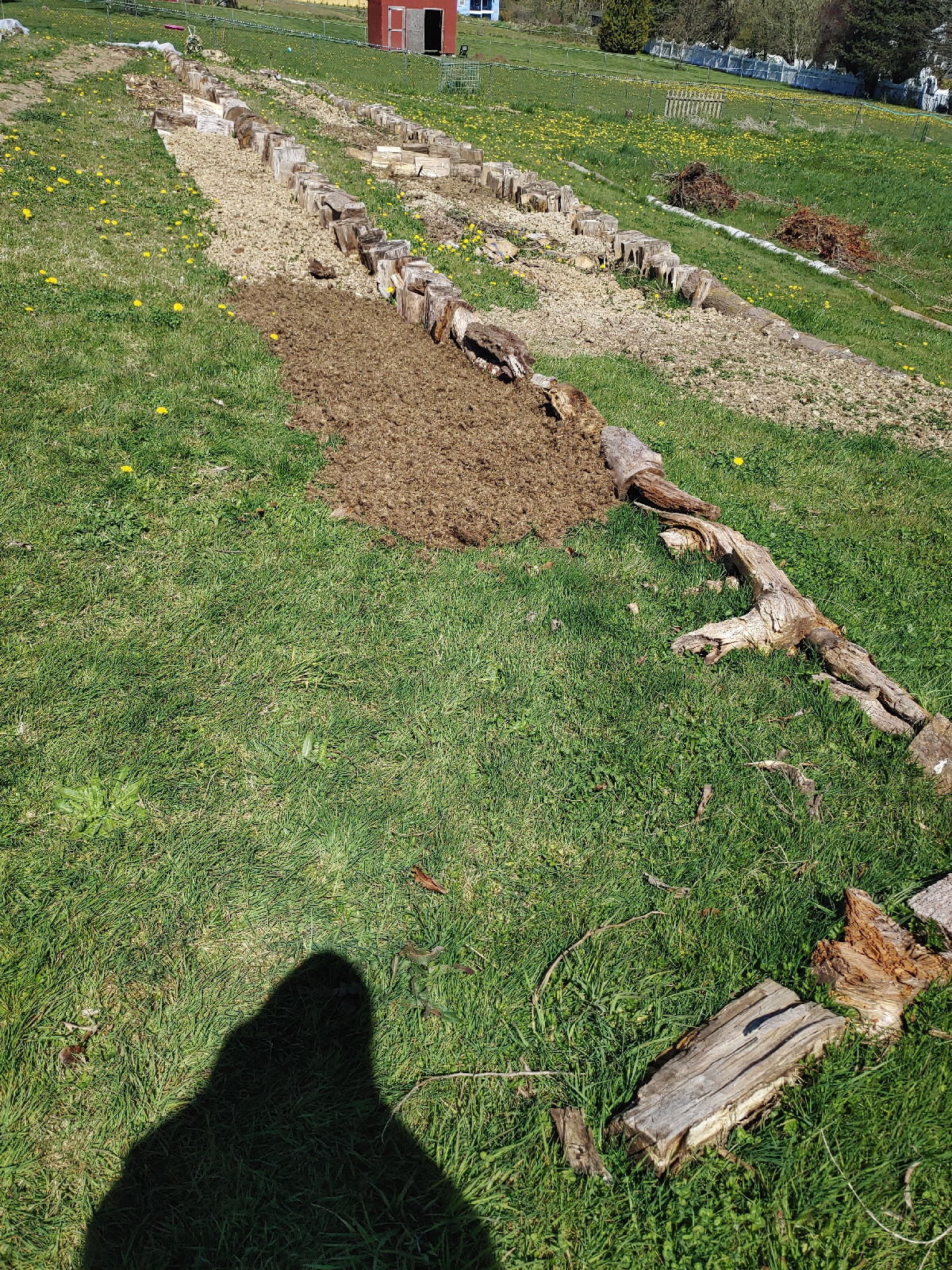It's April 30th.
- Things are growing FAST now. I potted-on pumpkin starts on April 23 and they're doubled today. The potato plants are huge!
- The pepper starts I sowed from seed on March 8th are the same height as those I sowed on the 20th, and the ones I sowed on the 16th are the same height (taller) as the ones I sowed on the 22nd. WTF?
- The corn starts are 8", but the corn I sowed outside (same soaked seed) hasn't even sprouted yet. Are the soil temperatures not warm enough for corn? Update 5/21/2020: no!
- I put pepper starts outside under poly-tunnels and they aren't happy. Some are in manure, though, so maybe that's why. Update 5/21/2020: yes! Plus no water was getting inside the tunnels.
- There's almost no point in sowing indoors except for the super warm crops, I guess. Or maybe no point in planting them out until the soil temps are right. But onions should be ok now, and they haven't grown since I transplanted them over a week ago. Ditto cabbages and kales. The beets are finally starting to liven up but they're the same size. Maybe it's the soil. Maybe we did a bad job transplanting. I didn't feed them with bacterial inoculant. Update 5/21/2020: there IS a point to sowing indoors.
- You allow for better succession, ie, in crops that would normally overlap each other.
- You get the plants strong enough to withstand slug pressure, transplanting stress, etc.
- You control the soil temp for longer.
- If things die outside, you have a stash of refills.
- My stupid melons won't come up (in starts). The sunflower, corn, and pumpkin went bananas, but nothing from the melons. Update 5/21/2020: they're still small.
- The comfrey doubled in size since April 20th.
- The rhubarb beside the driveway was healthy on April 24th, and today there was a central stem with a flower head that was 3 feet tall!!!
- The radishes are huge, like big carrot tops! They're hollow inside, like geodes. French Dressing radishes. They grew from seed sown super (perhaps too) early, in March.
They're near the pole peas which are also doing well. And the bush beans and bush peas that haven't even sprouted (I found out they need much warmer soil). Wish I had logged what type of soil layering (compost vs fresh manure vs aged manure) I had done in each section. I thought I would remember. Dummy. Doesn't matter because next year, my soil will have lots of biological life in it. - The clover seeds I sowed within the last month are sprouting and growing fast right now.
How can I anticipate this phase next year? By comparing the weather pattern and soil temps?
Update ?/?/2020: It's the fracking soil temperature!! We have a strong wind that keeps the soil cold until round about now. So, sure, the radishes and snap peas germinated and grew fast, much earlier, and the potatoes recovered from.the cold and are exploding. But the corn, bush peas/beans, lettuces from seed...those are just sprouting through now. The carrots haven't even started.
Weather-wise, we've had no frosts in weeks, the daytime temps are in the 60s and the lows are in the 40s. I haven't had to water in 2 weeks because of regular rain. Need to get the soil temp.
Update 5/21/2020: In one of the veg beds, I had 2 rows of corn. The row closest to the retaining wall wood on the downhill side of the terrace didn't germinate until a couple days ago. The row at the front of the terrace germinated more than a week ago. Why? Because the fracking cold air slid downhill and got caught by the retaining wood, which is higher than the soil level because I got lazy and also ran out of backfill for the terrace bed. So the soil temp for the back row was colder than the soil them for the front row. Next year, resolve this!!
Weather-wise, we've had no frosts in weeks, the daytime temps are in the 60s and the lows are in the 40s. I haven't had to water in 2 weeks because of regular rain. Need to get the soil temp.
Update 5/21/2020: In one of the veg beds, I had 2 rows of corn. The row closest to the retaining wall wood on the downhill side of the terrace didn't germinate until a couple days ago. The row at the front of the terrace germinated more than a week ago. Why? Because the fracking cold air slid downhill and got caught by the retaining wood, which is higher than the soil level because I got lazy and also ran out of backfill for the terrace bed. So the soil temp for the back row was colder than the soil them for the front row. Next year, resolve this!!





















































